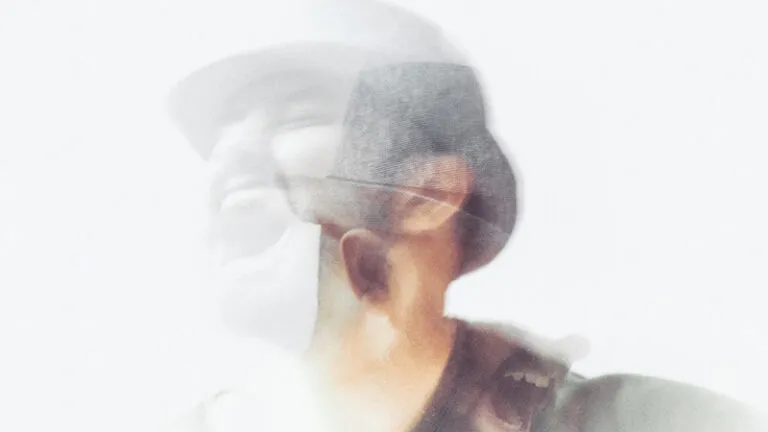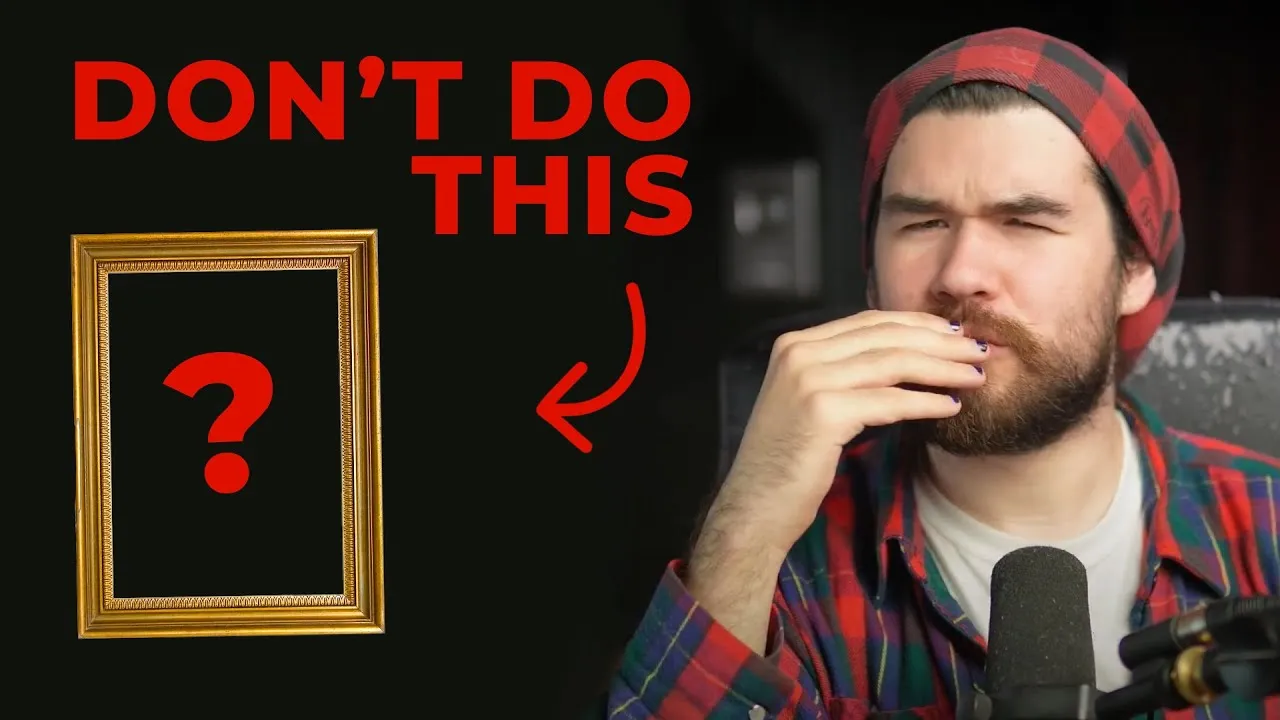When you think of hiring talent online, Fiverr probably springs to mind. But for many artists, the platform evokes mixed feelings. While it offers a marketplace for creativity, it also raises significant concerns among artists about the quality, compensation, and sustainability of their work. In this blog post, we'll dive deep into why some artists harbor strong resentment towards Fiverr and its impact on the creative industry.
The Rise of Fiverr: A Double-Edged Sword

Fiverr was launched in 2010, and it quickly became a go-to platform for freelancers and clients looking for a range of services, from graphic design to voice-over work. It revolutionized the way services were bought and sold online, making it easier than ever to connect with professionals across the globe. However, this rise has come with both advantages and drawbacks.
Here are some aspects of Fiverr that artists often criticize:
- Low Prices: While the concept of gigs starting at $5 is appealing for clients, many artists argue that it undervalues their skills and time. This pricing structure often forces talented creatives to compete on cost rather than quality.
- Quality Control: The sheer volume of services on Fiverr leads to a disparity in quality. Artists find themselves competing with amateurs who may not have the same level of expertise but can offer lower rates.
- Cuts and Fees: Fiverr takes a significant cut of each transaction, meaning artists often see a fraction of what they earn. This further diminishes fair compensation for their work.
- Over-Saturation: With thousands of artists offering similar services, it can be challenging to stand out. This saturation leads to dwindling opportunities for all, particularly for emerging artists.
- The Perception of Freelance Work: The platform has shifted the perception of freelance work, often leading clients to expect low-cost services without recognizing the skill and labor involved.
In summary, while Fiverr has undoubtedly changed the landscape of freelance work positively for some, many artists feel the drawbacks eclipse the benefits. Their fears are rooted in a desire for respect, fair pay, and a sustainable future in their chosen careers.
Also Read This: How Does Fiverr Pay in Nigeria
Quality vs. Price: The Artist's Dilemma

When it comes to the world of art and design, the phrase "you get what you pay for" couldn't resonate more. Artists often find themselves caught in a tight spot, balancing their passion and talent with the need to make ends meet. On platforms like Fiverr, buyers are often driven by budgetary constraints, leading to a flood of low-cost options. But here's where the dilemma kicks in.
On one hand, artists want to showcase their unique style and creativity, and they know that quality work requires time, effort, and a certain level of expertise. On the other hand, many potential clients are tempted by the lower prices, sometimes overlooking the craftsmanship that goes into creating a unique piece.
- Quality Concerns: Lower-priced services often attract buyers who may not understand the quality and skill involved. This can lead to more superficial projects that require quick action and less thoughtful engagement.
- Pressure to Cut Prices: As artists see their competitors underpricing their services, the pressure mounts to lower their own rates, leading to a race to the bottom.
- Impact on Reputation: Artists worry that bad work reflects poorly on their reputation—the lower the price, the higher the chance of clients with unrealistically high expectations.
Ultimately, for artists, navigating this landscape can be particularly exhausting, forcing them to grapple with compromises that affect their self-worth and professional integrity.
Also Read This: How Many Gigs Can I Make on Fiverr?
Undervaluation of Creative Work
In the bustling marketplace of services, creative work often faces an uphill battle in terms of valuation. While tangible products, like furniture or electronics, come with standardized price tags that reflect their materials and labor, creative output is far more nuanced.
The reality is, in environments like Fiverr, many clients are conditioned to see artistry as something that should come cheap. When people can purchase a logo for just $5, it's easy to forget that passion, time, and skill are the true currencies behind creative services.
- Misunderstanding of the Creative Process: Many clients might assume that creating something artistic is easier than it is, failing to appreciate the hours of brainstorming, sketching, and refining that go into each piece.
- Comparing to Traditional Goods: There's often a false equivalence drawn between artistic creations and mass-produced items. This dismisses the individuality and emotional input tied to creative work.
- Detrimental Market Effects: As rates drop, artists may feel pushed into accepting lower-paying gigs just to keep up, leading to a broader undervaluation of the entire industry.
This detriment affects not just individual artists; it trickles down, altering perceptions of creative work across the board. Ultimately, it's crucial to foster a culture that respects and fairly compensates the incredible dedication artists pour into their craft.
Also Read This: Thriving as an Online Freelancer
The Impact of Competition on Independent Artists
Ah, competition—it's a double-edged sword, isn't it? On one hand, healthy competition can spur creativity and innovation; on the other hand, it can feel downright overwhelming, especially for independent artists navigating platforms like Fiverr. Many artists find themselves in an ocean of other creatives, each vying for attention in a sea of options. This leads to a few key issues.
- Price Undercutting: With so many artists on Fiverr, many feel pressured to lower their prices just to attract clients. Unfortunately, this creates a cycle where clients expect high-quality work for minimal pay, which can be disheartening and unsustainable for artists.
- Quality vs. Quantity: On Fiverr, the focus often shifts toward fulfilling the demands of many clients rather than producing exceptional, standout pieces. This quantity-over-quality mindset does not sit well with artists who pour their heart and soul into every project.
- Diminished Personal Brand: Independent artists usually pride themselves on individual style and unique offerings. However, in a crowded marketplace, it can be tough to stand out. Artists may find their personal brand diluted as they compete with countless others.
The irony is that while Fiverr connects clients to a myriad of talent, it also fosters an environment of fierce competition that can stifle the very creativity it aims to promote. Many independent artists long for a balanced marketplace where quality and fair compensation take precedence over sheer numbers.
Also Read This: What is Fiverr Freelancing?
Challenges of Client Expectations and Communication
Let’s face it; communication is key in any relationship, and that includes the artist-client dynamic. While Fiverr makes it easy to connect, it doesn't always make communication seamless. Independent artists face a unique set of challenges when dealing with client expectations.
- Vague Instructions: Many clients may not fully articulate their vision, leaving artists guessing what exactly is expected. This ambiguity can lead to mismatched expectations and frustration on both sides.
- Over-Ambitious Requests: Occasionally, clients may have grand ideas that don’t match the project scope or budget. An artist might find themselves in a predicament trying to deliver a masterpiece that stretches beyond reasonable limits.
- Reluctance to Provide Feedback: Some clients might not communicate effectively during the revision process, leading to delays and misunderstandings. Clear, constructive feedback is crucial, but not all clients know how to give it.
When these challenges arise, artists often feel overwhelmed, which can lead to burnout and a diminishing passion for their art. It's essential for independent artists to set clear boundaries and open lines of communication right from the beginning, but that’s not always as easy as it sounds. Ultimately, finding a balance between client demands and personal artistic integrity can be quite the juggling act!
Also Read This: Fiverr for Businesses: How to Get the Most Out of the Platform
7. Alternatives to Fiverr for Artists
While Fiverr has its fans, many artists feel that it doesn't fully meet their needs or values. Thankfully, there are numerous alternatives out there that cater to creative professionals. Here’s a rundown of some popular platforms that are worth checking out:
- Upwork: This platform is great for freelancers, including artists, looking to engage in longer-term projects. With a diverse range of categories, artists can find clients who are willing to pay higher rates for quality work.
- 99designs: Specifically geared toward designers, 99designs allows artists to showcase their portfolios and compete in design contests. This dynamic can attract clients seeking unique creative solutions.
- Behance: Owned by Adobe, Behance is more of a portfolio site than a gig marketplace. However, its community features and job listings can help artists connect with companies seeking their expertise.
- ArtStation: If you're a visual artist, ArtStation offers a platform to showcase your work and connect with potential clients who appreciate high-quality art. Plus, it has a built-in marketplace for digital art sales.
- Creative Market: Perfect for artists selling digital assets, Creative Market allows you to sell everything from graphics to templates. It's a great way to earn passive income off your art!
These alternatives not only provide different levels of exposure but often come with more favorable revenue-sharing models and support for artists’ creative rights. Exploring these platforms might be an excellent way for you to find better opportunities that align with your artistic style and professional goals.
8. Conclusion: Finding Balance in the Gig Economy
The gig economy has become a significant force in how artists market themselves and find work. While platforms like Fiverr certainly have their appeal, they also present challenges that many artists find unappealing. The goal is to find a balance that allows creativity to flourish without compromising on quality or pay. Here’s a quick recap to consider:
- Understand Your Worth: It’s vital for artists to recognize their unique skills and set prices that reflect the value they provide.
- Diverse Income Streams: Explore various platforms and income sources — from freelance work to selling art directly — to create a more stable income.
- Network and Community: Cultivating connections within the artistic community can lead to referrals and collaborations that are often more fulfilling.
- Stand by Your Values: Choose platforms that align with your principles, ensuring you feel empowered rather than exploited.
Ultimately, it's about creating an environment where artists can express themselves authentically while also making a living. The gig economy has its pros and cons, but with the right strategies and a bit of research, artists can find success beyond Fiverr and thrive in their creative endeavors.



